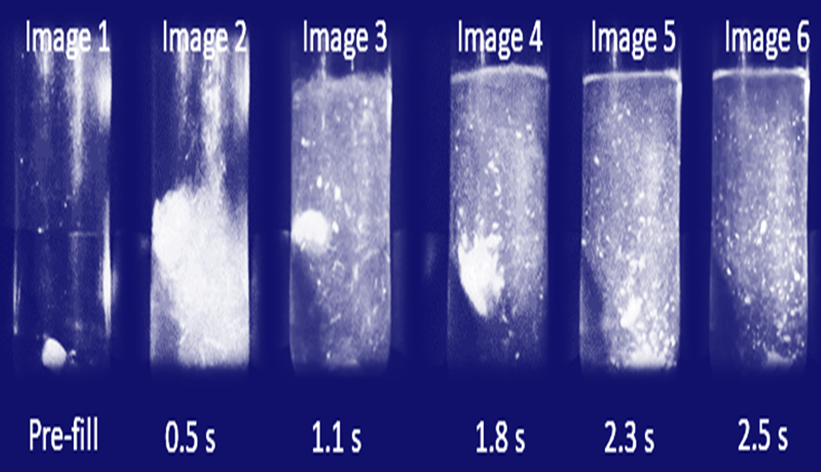Respitab is an innovative tablet-based technology platform designed for use in pressurized metered dose inhalers (pMDIs), offering a novel approach to inhalation product formulation and manufacturing. Unlike conventional pMDI suspension processes, which require complex mixing and homogenization of drug particles in propellant, Respitab enables the drug and excipients to be compressed into a solid tablet (the “Respitab”) that is then placed directly into the inhaler canister. Key Features and Advantages
Propellant Dispersible Tablets
Product development can be conducted at small scale. Low risk of batch failure at final product stage.
No complex processes requiring costly scale up.
Formulation development is quick as can largely be done at lab scale with low risk scale up.
Simplified development as same technology used as a platform across multiple products.
Formulations can be tuned to optimize product performance.
Excipients well established in major markets for inhalation products.
Approved patents in major markets.
Process can be continuous or discontinuous allowing intermediates to be shipped to other locations for filling.
Respitab Salbutamol APSD after storage at 40°C/75%RH at 0, 1, 3 and 6 months Ventolin comparator is from a UK pharmaceutical wholesale supplier
Respitab Salbutamol Accelerated Stability Performance
What is Respitab?
Patented MDI Technology
The Respitab process eliminates the need for high-shear mixing, homogenization, and continuous agitation during filling. Tablets are manufactured using standard tablet presses and are simply dropped into canisters before propellant filling, streamlining production and reducing equipment requirements.
Each Respitab tablet contains a pre-measured dose of active pharmaceutical ingredient (API) and excipients, ensuring through batch uniformity and minimizing batch-to-batch variability.
By avoiding bulk suspension handling and cleaning steps, Respitab minimizes API loss and cross-contamination risk, making it especially advantageous for costly or potent drugs.
The technology supports flexible batch sizes and is easily scalable, allowing rapid adaptation to different production volumes and straightforward tech transfer between manufacturing sites.
Since the API is stored in a solid state until the propellant is added, there is reduced risk of sedimentation or aggregation compared to traditional pMDI suspensions.
Advantages for Formulators
Respitab combines the active pharmaceutical ingredient (API) and excipients into a single, compressed tablet, eliminating the need for complex suspension formulations.
Each tablet contains a pre-measured, consistent dose of drug and excipients, ensuring reliable delivery with every actuation.
Storing the API in solid tablet form until propellant addition reduces the risk of sedimentation or aggregation, improving formulation stability over time.
The tablet-based approach minimizes drug loss during manufacturing, cleaning, and filling, which is especially valuable for costly or potent compounds.
Respitab is compatible with both traditional and next-generation, low-GWP propellants, supporting regulatory and environmental goals.
Advantages for Manufacturers
Tablets are manufactured using standard tablet presses and simply dropped into canisters, eliminating the need for high-shear mixing, homogenization, and continuous agitation required for conventional pMDIs.
The process requires less specialized equipment and results in lower cleaning and validation burdens, saving time and operational costs.
Individual tablet dosing reduces the risk of cross-contamination between batches, supporting quality assurance and regulatory compliance.
The straightforward tablet process is easily scalable and transferable between manufacturing sites, enabling rapid adaptation to changing project needs.
The simplicity and flexibility of the Respitab process allow for faster formulation optimization and quicker progression from development to clinical and commercial manufacturing.Key Advantages

Low Cost

Simple Scale Up

Fast

Platform Technology

Tunable

Approved Excipients

Patent Protected

Flexibility
Example

